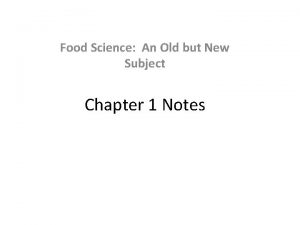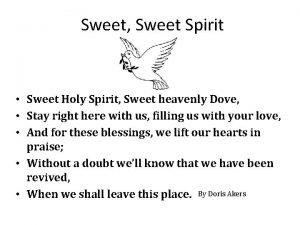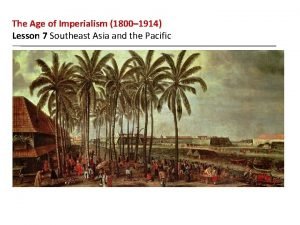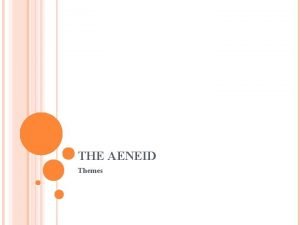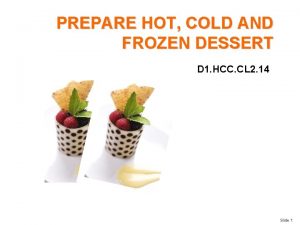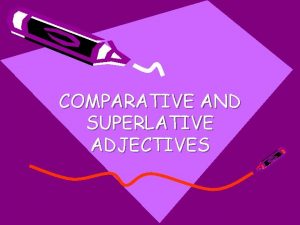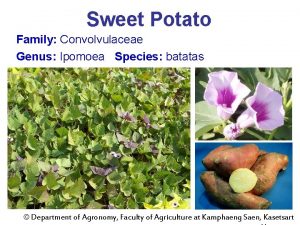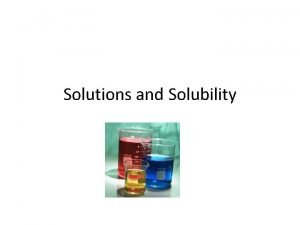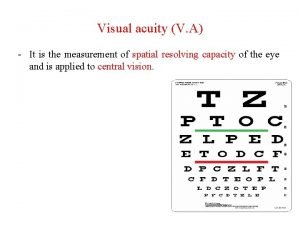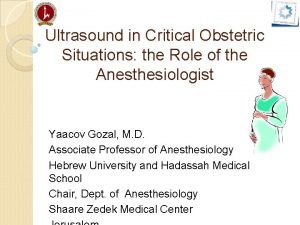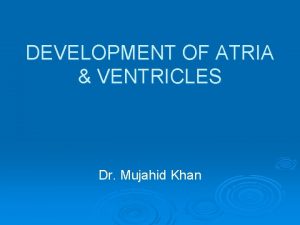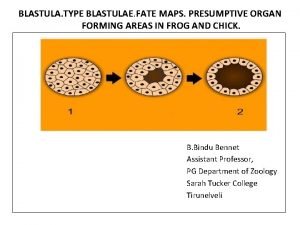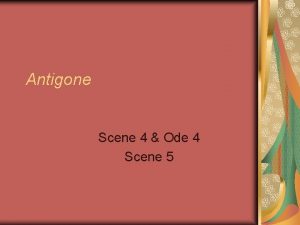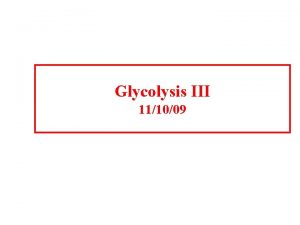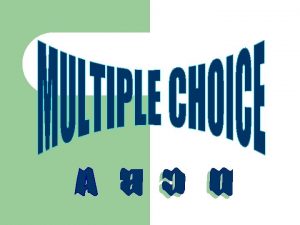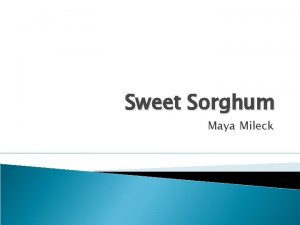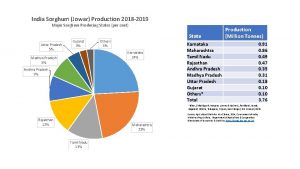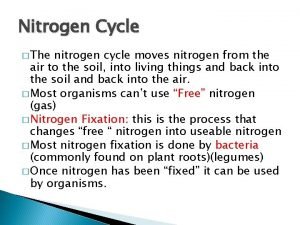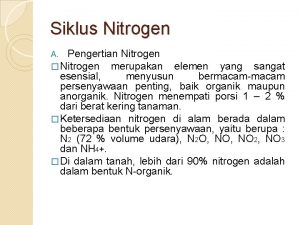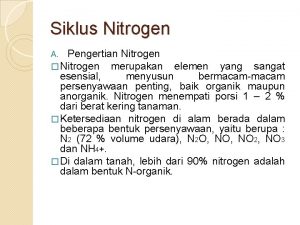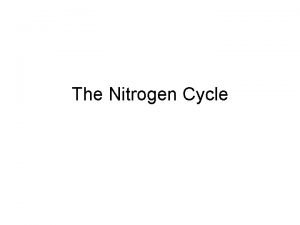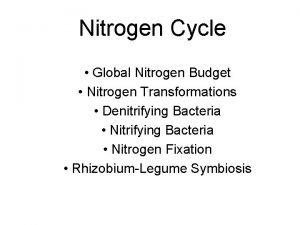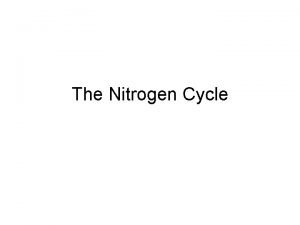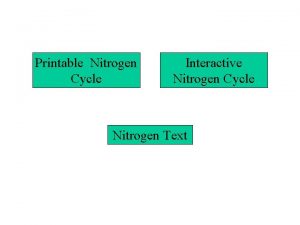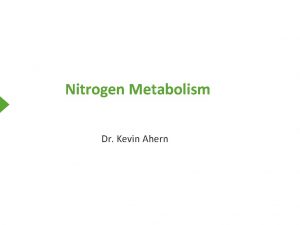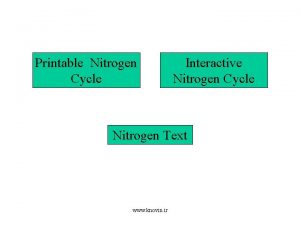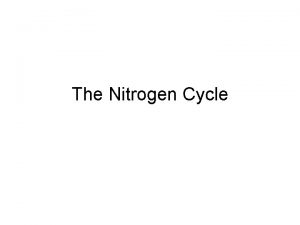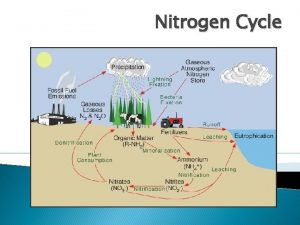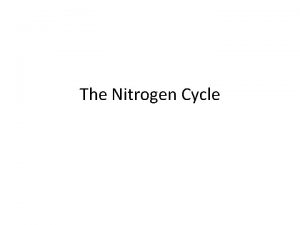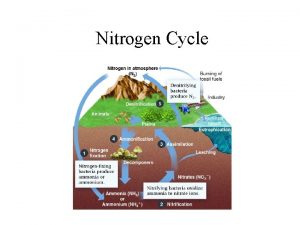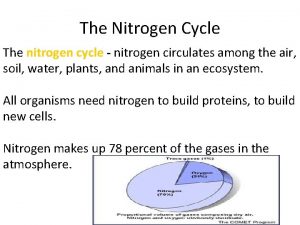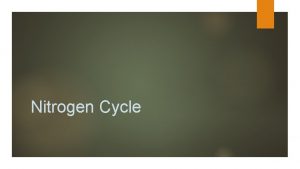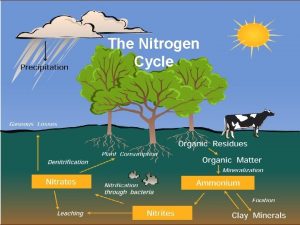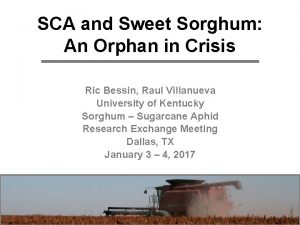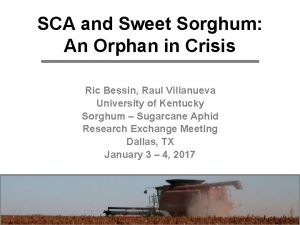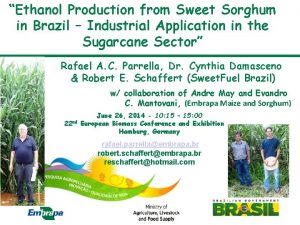MODELING WATER AND NITROGEN FATE FROM SWEET SORGHUM






























- Slides: 30

MODELING WATER AND NITROGEN FATE FROM SWEET SORGHUM IRRIGATED WITH FRESH AND BLENDED SALINE WATERS USING HYDRUS-2 D T. B. Ramos 1, J. Šimůnek 2, M. C. Gonçalves 3, J. C. Martins 3, A. Prazeres 3 & L. S. Pereira 1 1 2 3 Institute of Agronomy, Technical University of Lisbon, Portugal Department of Environmental Sciences, University of California, Riverside, USA National Institute of Agronomic and Veterinarian Research, INIAV, Oeiras, Portugal 4 th HYDRUS Workshop, March 21 – 22, 2013, Prague, Czech Republic

OBJECTIVES The Alentejo region of southern Portugal normally exhibits high summer temperatures and very low rainfall that limit crop production. In this water scarce region, irrigation plays a fundamental economical and social role but has enhanced several environmental problems as a result of poor irrigation and water management practices. Human-induced salinization and sodification, and non-point source pollution from agricultural fertilization are among the recognized problems. Modeling of subsurface water flow and the transport of major soluble ions in and below the root zone is essential for predicting groundwater quality, implementing better irrigation and fertilization practices

PREVIOUS STUDIES Salt transport in soil lysimeters with the UNSATCHEM model Na+ SAR Gonçalves, M. C. , Šimůnek, J. , Ramos, T. B. , Martins, J. C. , Neves, M. J. , Pires, F. P. , 2006. Multicomponent solute transport in soil lysimeters irrigated with waters of different quality. Water Resour. Res. 42, 17, W 08401, doi: 10. 1029/2005 WR 004802.

PREVIOUS STUDIES Salt and nitrogen transport in the soil with HYDRUS-1 D Na+ Mg 2+ N-NO 3 - Ramos, T. B. , Šimůnek, J. , Gonçalves, M. C. , Martins, J. C. , Prazeres, A. , Castanheira, N. L. , Pereira, L. S. , 2011. Field Evaluation of a multicomponent solute transport model in soils irrigated with saline waters. J. Hydrol. 407: 129 -144, doi: 10. 1016/j. jhydrol. 2011. 07. 016.

OBJECTIVES Two-dimensional modeling of water and nitrogen fate in a plot with sweet sorghum grown under Mediterranean conditions while considering different drip fertigation and water quality scenarios. Evaluate the effectiveness of HYDRUS-2 D to: (i) Predict water contents and fluxes, (ii) Predict overall salinity given by ECsw, (iii) Quantify water uptake reductions due to the use of saline waters, (iv) Predict N-H 4+ and N-NO 3 - concentrations in the soil and leaching. Ramos, T. B. , Šimůnek, J. , Gonçalves, M. C. , Martins, J. C. , Prazeres, A. , Pereira, L. S. , 2012. Twodimensional modeling of water and nitrogen fate from sweet sorghum irrigated with fresh and blended saline waters. Agric. Water Manage. 111: 87 -104, doi: 10. 1016/j. agwat. 2012. 05. 007.

FIELD EXPERIMENT • Fluvisol with loam texture • Time period May 2007 to April 2010 3 irrigation cycles and 3 rainfall leaching cycles • Culture Sweet sorghum • Water applied 425, 522, and 546 mm in 2007, 2008, and 2009, respectively • Trickle irrigation system A triple emitter source irrigation system was used to apply water, salt (Na+), and fertilizer (NH 4 NO 3). Based on Israeli designs used to obtain yield functions

FIELD EXPERIMENT Layout of the TES system

FIELD EXPERIMENT

FIELD EXPERIMENT 12 experimental plots

FIELD EXPERIMENT Salt gradient: - 60 to 2166 g m 2 y-1 - 0. 8 to 10. 6 d. S m-1

FIELD EXPERIMENT Nitrogen gradient: - 56. 8 to 0 g m-2 y-1 - 95. 0 to 0. 15 mmolc L-1

HYDRUS-2 D SIMULATIONS

HYDRUS-2 D SIMULATIONS Location of a point source emitter and monitoring sites in the experimental plot

AXISYMMETRICAL DOMAIN GEOMETRY Flux boundary Atmospheric condition boundary condition Z 20 cm r 17. 5 cm Drip Emitter 20 cm 40 cm Observation points 20 cm 100 cm 60 cm 37. 5 cm Free drainage

Monitoring irrigation and leaching cycles (20, 40, and 60 cm) • Soil water content (TDR) • Electrical conductivity from soil solution (ceramic cups) • Soluble ions from soil solution (ceramic cups)

INPUT DATA Measured in representative soil profile at 20, 40 and 60 cm Soil Initial Conditions • Soil water content, TDR • Dry bulk density • Electrical conductivity of the soil solution (ECsw) Soil Hydraulic Properties • Suction tables • Pressure Plate • Evaporation Method • Hot Air Method Solute Transport Parameters • Chloride Breakthrough Curves • CXTFIT 2. 1 Described with Mualem-van Genuchten equations

TIME-VARIABLE BOUNDARY CONDITIONS • Rainfall (daily) / Irrigation water • Daily ET 0 (Penman-Monteith) • ETc = (Kcb + Ke) ET 0 • (dual Kc approach from FAO 56) Kcb mid = Kc min + (Kcb full – Kc min)(1 -e(-0. 7 LAI)) (Leaf Area Index measured every week)

MODELING APROACH Linear Adsorption Isotherm Kd, ECsw = 0 cm 3 g-1 Kd, NH 4+ = 3. 5 cm 3 g-1 Kd, NO 3 - = 0 cm 3 g-1 Nitrification Sequential first-order decay chain: µw = 0. 2 d-1 µs = 0. 2 d-1 Hanson et al. (2006)

MODELING APROACH Root Water Uptake Water stress Feddes et al. (1978) Salinity stress Maas’s (1990) threshold and slope function KEC = 2 Nutrient uptake Only considering passive nutrient uptake Cmax is the maximum concentration of the root uptake Root distribution

RESULTS

WATER FLOW 40 cm RMSE = 0. 03 cm-3 • Tp: 360 - 457 mm • Ta: 264 - 364 mm • Tp reductions due to water stress: 21. 9 – 27. 4 % Water stress was a function of the irrigation schedule during each season

ECsw (d. S m-1) 40 cm • Tp reductions due to water and salinity stress: 24. 2 – 33. 3 % (plots with saline waters) RMSE = 1. 764 d. S m-1

SALINITY DISTRIBUTION Salinity stress: 2007: 0 % 2008: 2. 3 - 4. 7 % 2009: 4. 6 – 7. 0 % Sweet sorghum showed to be tolerant to the use of saline waters during one crop season. The continuous use of synthetic saline irrigation waters led to soil salinization over the years and to transpiration reductions

SALINITY DISTRIBUTION Transpiration in plots with fresh irrigation waters were not affected by the osmotic stress

N-NH 4+ 40 cm RMSE = 0. 042 mmolc L-1

N-NO 340 cm RMSE = 3. 078 mmolc L-1

NITROGEN BALANCE • Fertigation events: 2007: 4 2008: 6 2009: 3 • N-NO 3− leaching: 2007: 51 - 53 % 2008: 41 % 2009: 68 - 70 % • N-NO 3− uptake: 2007: 37 % 2008: 39 - 42 % 2009: 23 - 25 % • The leaching of N out of the root zone depended closely on drainage, the amount of N applied, the form of N in the fertilizer, and the time and number of fertigation events. • The effects of the salinity stress on nutrient uptake (and inversely on nutrient leaching) was relatively small since sweet sorghum has a medium to high tolerance to salinity

YIELD FUNCTION An additional incremental change of N-NO 3 - uptake produced diminishing returns in the total dry biomass response with optimum levels being reached at 130 -180 kg/ha

CONCLUSIONS

CONCLUSIONS • HYDRUS-2 D successfully estimated the fate of nitrogen in field plots grown with sweet sorghum in Alentejo. • Saline waters can be viewed as an important source of irrigation water during drought seasons, the use of marginal waters showed viability for irrigating sweet sorghum during a limited time period (one crop season). • The relatively low water needs (360 -457 mm) and N requirements (130180 kg/ha) of sweet sorghum makes it a good alternative when compared to other traditional crops grown in the region. • The modeling approach helped us understand the best irrigation and fertigation management practices to be adopted in future practical applications for increasing nutrient uptake and reducing nutrient leaching.
 Water and water and water water
Water and water and water water A cereal formulated from maize sorghum and cottonseed flour
A cereal formulated from maize sorghum and cottonseed flour There's a sweet, sweet spirit in this place
There's a sweet, sweet spirit in this place Classification of sorghum
Classification of sorghum Erickson nursing theory
Erickson nursing theory Relational vs dimensional data modeling
Relational vs dimensional data modeling What is good nitrogen fertilizer
What is good nitrogen fertilizer Romeo and juliet quotes about fate
Romeo and juliet quotes about fate Contrast siam’s fate to that of burma and vietnam
Contrast siam’s fate to that of burma and vietnam Fate in the aeneid
Fate in the aeneid Compare and contrast carbon and nitrogen cycles
Compare and contrast carbon and nitrogen cycles He prepares all hot and cold dessert
He prepares all hot and cold dessert Superlative rules
Superlative rules Sweet potato genus
Sweet potato genus Sweet tea solute and solvent
Sweet tea solute and solvent V/a eye
V/a eye Sweet clara and the freedom quilt summary
Sweet clara and the freedom quilt summary Cara menghitung air tawar di kapal
Cara menghitung air tawar di kapal Four-model approach
Four-model approach Modeling with quadratic functions
Modeling with quadratic functions Typical process description tools include
Typical process description tools include William wallace fate
William wallace fate Fate exam
Fate exam Gadsden purchase definition
Gadsden purchase definition Partitioning of primordial ventricle
Partitioning of primordial ventricle Judy believes that her fate
Judy believes that her fate Discoblastula diagram
Discoblastula diagram Who does antigone blame for her punishment
Who does antigone blame for her punishment Non fare agli altri ciò che non vuoi sia fatto a te
Non fare agli altri ciò che non vuoi sia fatto a te Fate of pyruvate
Fate of pyruvate To whom does napoleon sell the farm's pile of timber
To whom does napoleon sell the farm's pile of timber

